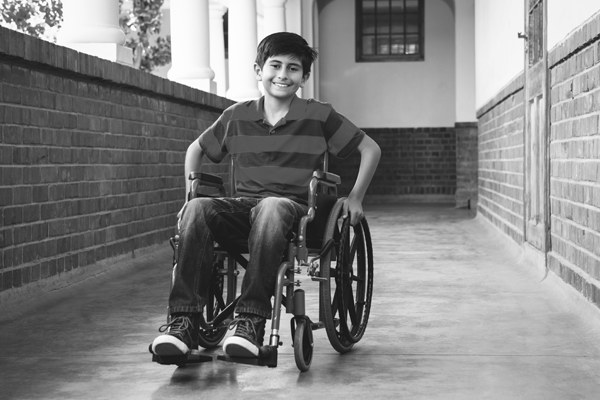Minimally-Invasive Technology Proving Itself in Epilepsy Procedures
Minimally-Invasive Technology Proving Itself in Epilepsy Procedures https://pediatricsnationwide.org/wp-content/themes/corpus/images/empty/thumbnail.jpg 150 150 Kevin Mayhood Kevin Mayhood https://secure.gravatar.com/avatar/bd57a8b155725b653da0c499ae1bf402?s=96&d=mm&r=g- October 11, 2016
- Kevin Mayhood
MRI-guided stereotactic laser ablation may become the option of choice for appropriate patients.
MRI-guided stereotactic laser ablation is proving comparable to open surgery in several procedures aimed at controlling epilepsy, researchers report.
Importantly, patients’ recovery is considerably easier and shorter than recuperation from traditional surgeries, and while thorough studies are needed, early results indicate fewer complications.
The advantages, which have persisted as more procedures have been performed and data collected, are driving adoption of the technique across the United States, including at Nationwide Children’s Hospital.
“You get the good part of surgery while leaving the bad part of surgery out —all that injury and pain,” says Jon T. Willie, MD, PhD, assistant professor of Neurological Surgery and Neurology at Emory University School of Medicine. Dr. Willie, who treats adults, co-wrote a chapter on the technique, referred to as SLA, in a textbook published last year.
“Compared with standard open surgery, with the MRI-guided stereotactic ablation, there is a much smaller incision, no formal craniotomy, no significant dural opening or exposure, and there’s no significant manipulation of surrounding tissue,” says Jonathan Pindrik, MD, a neurosurgeon at Nationwide Children’s Hospital and assistant professor of Neurological Surgery at The Ohio State University College of Medicine. Dr. Pindrik is part of the team that performed the first SLA procedure at Nationwide Children’s.
In SLA, also called MRI-guided laser interstitial thermal therapy, a laser heats and induces necrosis in the brain tissue that generates or spreads seizures. The MRI provides real-time visual feedback allowing surgeons to navigate past healthy brain tissue and monitor heating to ablate only targeted tissues.
Dr. Willie and his co-authors found that SLA appears to be as effective as open surgery. Success rates ranged from 75 to 86 percent for mesial temporal lobe epilepsy, a common form of epilepsy, and two other seizure-causing lesions: hypothalmicharatomas and cerebral cavernous malformations.
In patients who fall and injure themselves during seizures, SLA was successful in 70 to 80 percent of corpus callosotomies that sever the seizure pathway between brain lobes.
A comparison between two small groups of patients also showed that while both benefited equally from seizure control, those who underwent open temporal lobe surgery suffered greater neurocognitive declines than patients who underwent SLA.
SLA is likely to be used more frequently in adults. “The adult population has isolated mesial temporal sclerosis diagnosis more frequently than pediatric patients,” said Satya Gedela, MD, MRCP(UK),medical director of the Epilepsy Surgery Program at Nationwide Children’s. “But, if we choose the right patient for this procedure, the outcomes should be the same in adults and children with epilepsy with lesions.”
Reference:
Willie JT, Tung JK, Gross RE. “MRI-guided stereotactic laser-ablation.” In Image-Guided Neurosurgery, 1 ed. Edited by Golby A. (Cambridge, MA: Academic Press, 2015), 375-403.
About the author
-
Kevin Mayhoodhttps://pediatricsnationwide.org/author/kevin-mayhood/
-
Kevin Mayhoodhttps://pediatricsnationwide.org/author/kevin-mayhood/April 25, 2015
-
Kevin Mayhoodhttps://pediatricsnationwide.org/author/kevin-mayhood/April 25, 2015
-
Kevin Mayhoodhttps://pediatricsnationwide.org/author/kevin-mayhood/April 25, 2015
- Post Tags:
- Neurology
- Neurosurgery
- Posted In:
- In Brief







